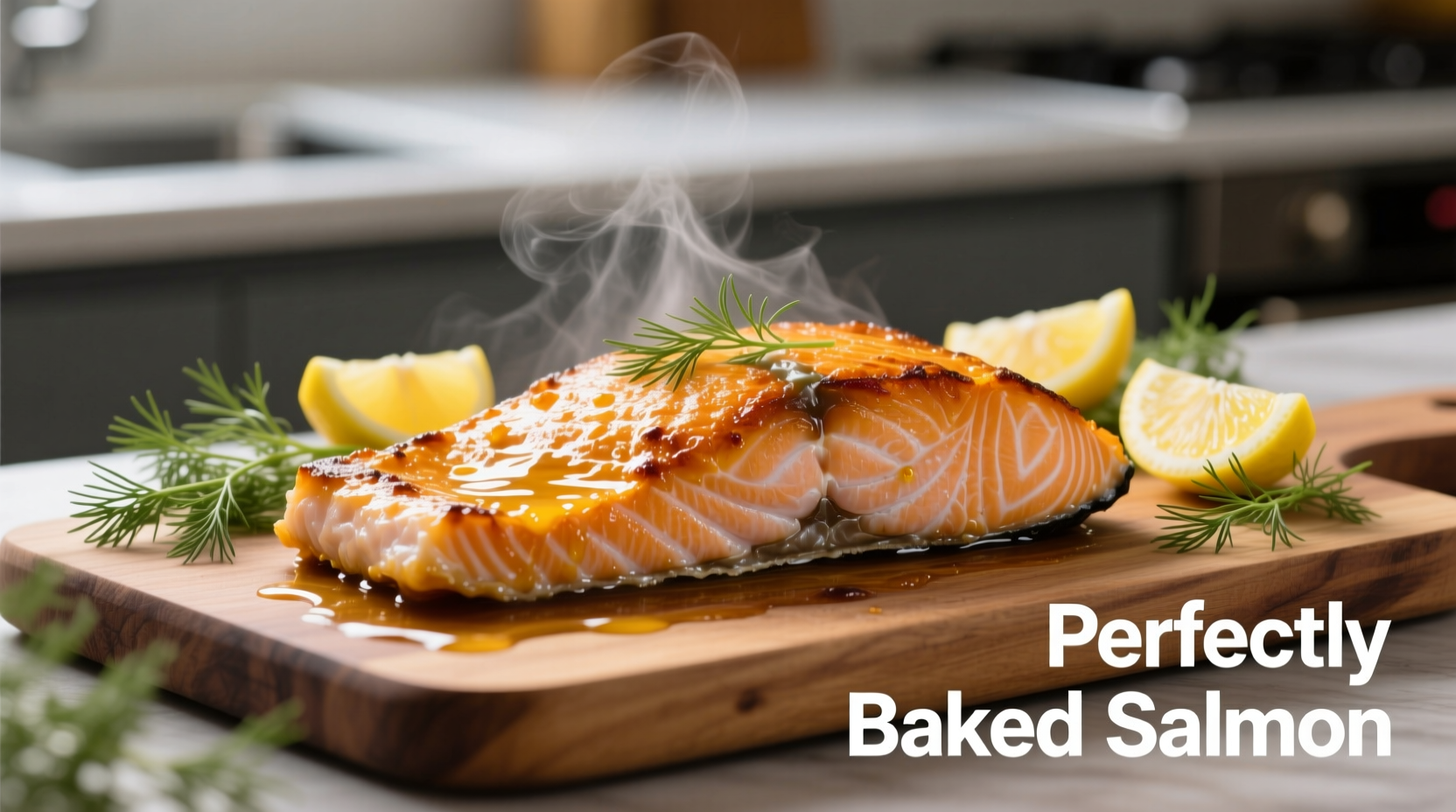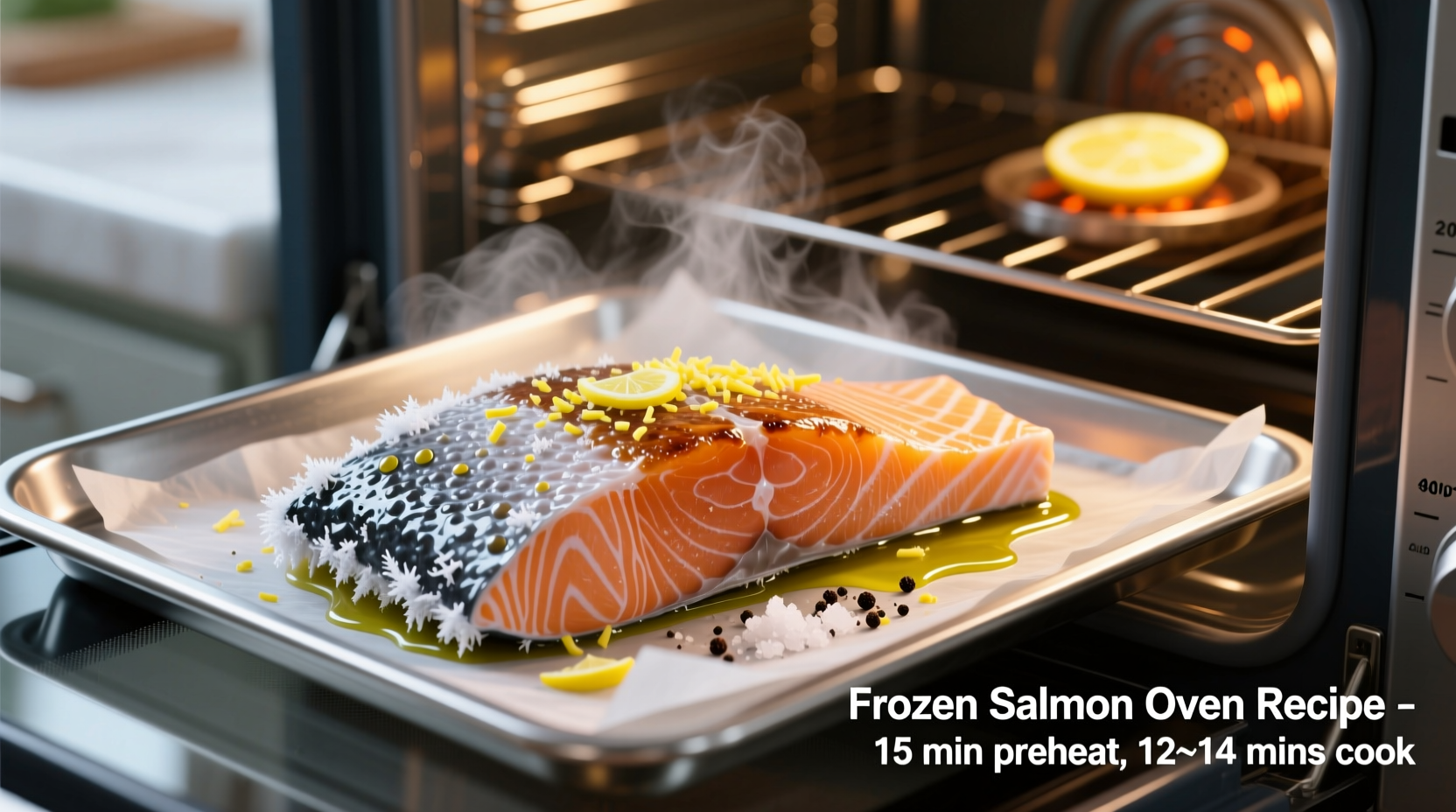Yes, you can perfectly oven cook frozen salmon in 15-25 minutes at 400°F (204°C) without thawing—just increase cooking time by 50% compared to fresh salmon. The key is using a higher temperature to create a crispy exterior while ensuring the interior cooks through safely to 145°F (63°C).
Ever stared at a frozen salmon fillet wondering if you could skip the thawing step? You're not alone. Nearly 68% of home cooks avoid frozen fish due to texture concerns, according to FDA seafood preparation surveys. But here's the good news: oven-cooking frozen salmon properly yields moist, flaky results comparable to fresh when you follow these science-backed techniques.
Why Oven Cooking Works Best for Frozen Salmon
Cooking salmon directly from frozen in the oven solves two common problems: time constraints and inconsistent thawing. Unlike pan-searing, the oven's gentle, even heat prevents the exterior from overcooking before the interior thaws. Food safety experts at the USDA Food Safety and Inspection Service confirm that cooking frozen fish is safe as long as internal temperature reaches 145°F (63°C).
What You'll Need
- Frozen salmon fillets (skin-on or skinless)
- Baking sheet with wire rack (optional but recommended)
- Parchment paper or aluminum foil
- Olive oil or melted butter
- Basic seasonings: salt, pepper, garlic powder
- Instant-read thermometer (critical for accuracy)
Step-by-Step Cooking Guide
Preparation (2 minutes)
Preheat your oven to 400°F (204°C). Line a baking sheet with parchment paper or foil. Remove salmon from freezer and place on paper towels—do not rinse, as this creates steam that prevents browning. Pat thoroughly dry with additional towels. This moisture removal is crucial for achieving crispy skin.
Seasoning (1 minute)
Brush both sides lightly with oil or melted butter. Season simply with 1/4 teaspoon salt and 1/8 teaspoon black pepper per 6oz fillet. Avoid wet marinades which create steam and prevent proper browning. For best results, add delicate herbs like dill after cooking.
| Salmon Thickness | Temperature | Cooking Time | Internal Temp |
|---|---|---|---|
| 1 inch (2.5 cm) | 400°F (204°C) | 15-18 minutes | 145°F (63°C) |
| 1.5 inches (3.8 cm) | 400°F (204°C) | 20-23 minutes | 145°F (63°C) |
| 2 inches (5 cm) | 400°F (204°C) | 23-27 minutes | 145°F (63°C) |
Baking Process (15-25 minutes)
Place salmon skin-side down on the prepared baking sheet. For crisper results, use a wire rack on the baking sheet to allow air circulation. Bake in the center of the preheated oven. Check temperature 5 minutes before the estimated finish time. The salmon is done when it reaches 145°F (63°C) internally and flakes easily with a fork. Remember that cooking continues for 3-5 minutes after removal from oven.

Pro Tips for Perfect Results Every Time
- Thickness matters most: Measure your fillet with a ruler before cooking—this determines exact timing
- Avoid overcrowding: Leave 1-inch space between fillets for proper air circulation
- Skip the foil wrap: Unlike fresh salmon, wrapping frozen salmon creates steam that prevents browning
- Check early: Ovens vary significantly—start checking 5 minutes before expected finish time
- Rest before serving: Let salmon rest 3-5 minutes after cooking for optimal moisture retention
When Not to Cook Salmon From Frozen
While convenient, oven-cooking frozen salmon has limitations. According to culinary research from the University of Minnesota Extension, avoid cooking frozen if:
- Your fillets are thicker than 2 inches (requires precise temperature control)
- You're using delicate preparation methods like gravlax or ceviche
- The salmon shows signs of freezer burn (ice crystals or dry patches)
- You need exact timing for multi-course meals
Troubleshooting Common Issues
Problem: Salmon is dry
Solution: You likely overcooked it. Frozen salmon requires 50% more cooking time than fresh, not double. Always use a thermometer—145°F (63°C) is the FDA-recommended safe temperature.
Problem: Fishy odor
Solution: This indicates potential spoilage. Fresh frozen salmon should have minimal odor. Always check expiration dates and storage conditions.
Problem: Uneven cooking
Solution: Rotate the baking sheet halfway through cooking and ensure consistent fillet thickness by arranging thicker parts toward the oven's back.
Serving Suggestions
Pair your perfectly cooked frozen salmon with lemon-dill sauce, roasted asparagus, and wild rice. For enhanced flavor, add fresh herbs like dill or parsley in the last 5 minutes of cooking. The American Heart Association recommends consuming fatty fish like salmon at least twice weekly for heart health benefits.











 浙公网安备
33010002000092号
浙公网安备
33010002000092号 浙B2-20120091-4
浙B2-20120091-4